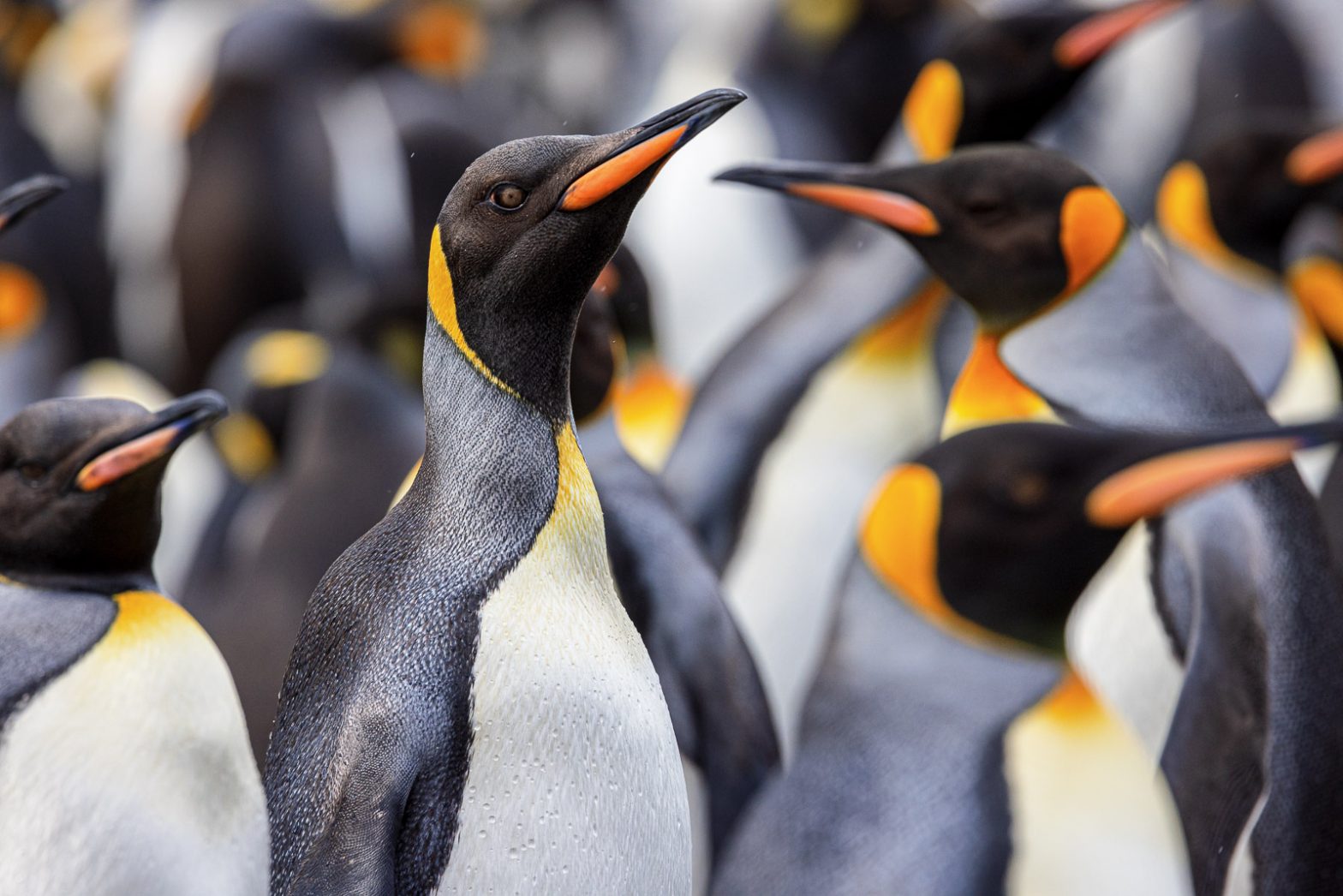
The King Penguins of St. Andrews Bay – Antarctica Entry 11 by Cindy Goeddel
Why are young King Penguins called oakum boys?
The sight, sound and smell of over 500,000 King Penguins on the beach by the glacial rivers at St. Andrews Bay are an overwhelming and emotional experience, never to be forgotten. Walking amongst the penguins as they strut about with aristocratic curiosity is as good as it gets!
The King Penguin’s breeding cycle is unique, they do not build a nest and it takes more than a year to raise a chick. A single egg is laid in early December and incubated on the birds’ feet for 54 days. When it hatches in late January, the chick is tended by both adults, each going to sea in turn to forage for food.


By six weeks, the chick has grown a layer of fat and a fluffy, downy, brown coat of feathers, and no longer needs the warmth and protection of the adults. Sailors named the young King Penguins oakum boys as the brown plumage was the color of oakum, used to caulk between the timbers of sailing ships. The young will not shed their brown fuzzy plumage and adopt the colorful sleek lines of the adults until they are over a year old and ready to fledge.
The oakum boys gather in large crèches, appearing as brown ribbons amidst the chaos of gray and orange adults. As both parents now go to sea for food, and the chick receives double rations, by the end of summer it has enough fat reserves to survive the coming winter months. During winter, when the adults may be away for weeks, as the fish are now further offshore, the chicks huddle together for warmth, a mass of brown on the snow of South Georgia. The return of spring brings increased food supplies, and the juveniles are again fed more frequently. In December they molt into their adult coat and begin to fledge.


It is barely believable that these young penguins can survive for weeks on end during the Antarctic winter without parents or food. What is equally amazing is the ability of the parents to come and go from the sea and locate their own chick by sound amidst the deafening cacophony of the hundreds of thousands of birds.

